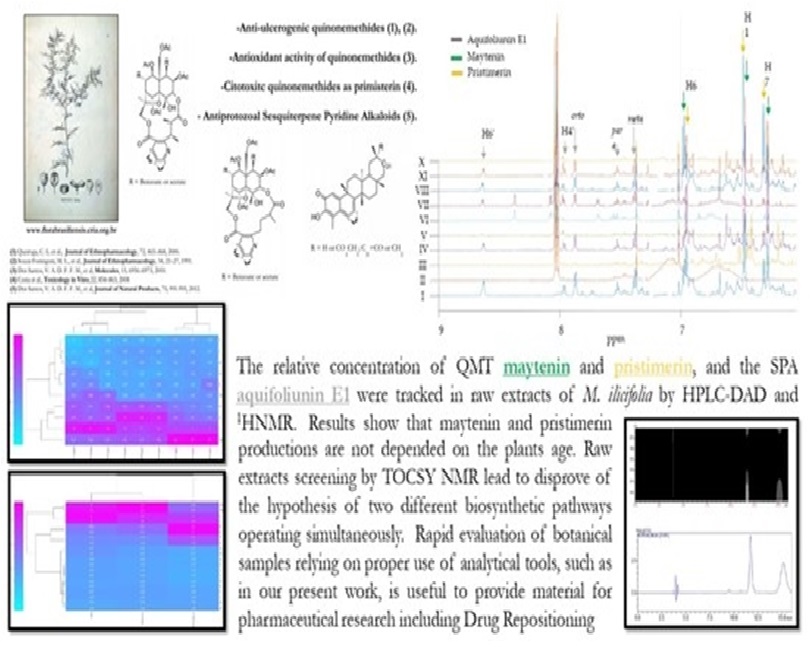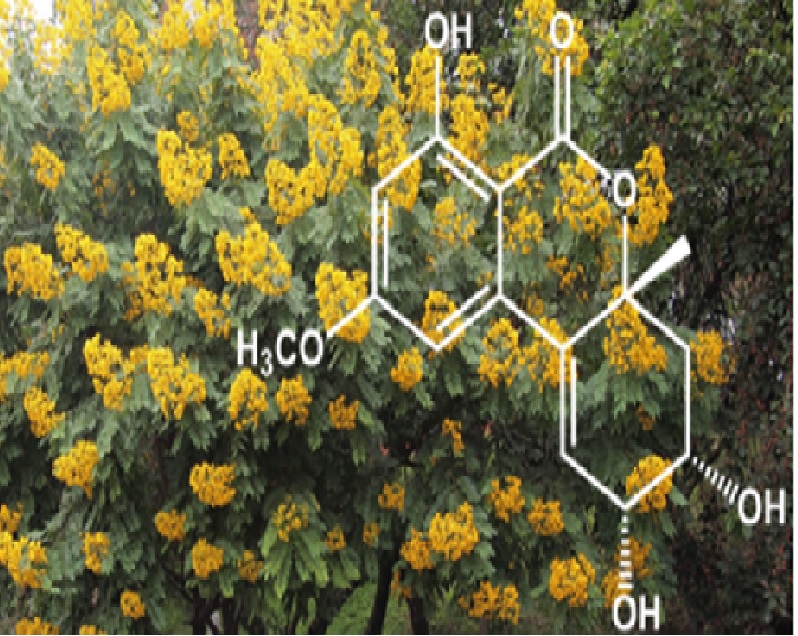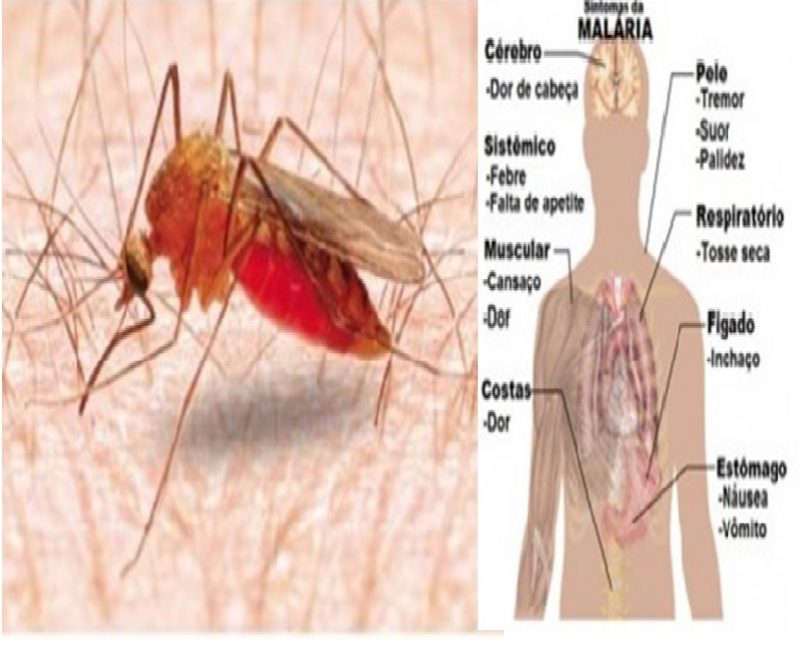
Authors:
Pavarini, Daniel Petinatti 1, 2 ; Selegato, Denise Medeiros 1 ; Castro-Gamboa, Ian 1 ; Silva do Sacramento, Luiz Vitor 3 ; Furlan, Maysa 1
Abstract:
Biodiversity is key for maintenance of life and source of richness. Nevertheless, concepts such as phenotype expression are also pivotal to understand how chemical diversity varies in a living organism. Sesquiterpene pyridine alkaloids (SPAs) and quinonemethide triterpenes (QMTs) accumulate in root bark of Celastraceae plants. However, despite their known bioactive traits, there is still a lack of evidence regarding their ecological functions. Our present contribution combines analytical tools to study clones and individuals of Maytenus ilicifolia (Celastraceae) kept alive in an ex situ collection and determine whether or not these two major biosynthetic pathways could be switched on simultaneously. The relative concentration of the QMTs maytenin (1) and pristimerin (2), and the SPA aquifoliunin E1 (3) were tracked in raw extracts by HPLC-DAD and 1H-NMR. Hierarchical Clustering Analysis (HCA) was used to group individuals according their ability to accumulate these metabolites. Semi-quantitative analysis showed an extensive occurrence of QMT in most individuals, whereas SPA was only detected in minor abundance in five samples. Contrary to QMTs, SPAs did not accumulate extensively, contradicting the hypothesis of two different biosynthetic pathways operating simultaneously. Moreover, the production of QMT varied significantly among samples of the same ex situ collection, suggesting that the terpene contents in root bark extracts were not dependent on abiotic effects. HCA results showed that QMT occurrence was high regardless of the plant age. This data disproves the hypothesis that QMT biosynthesis was age-dependent. Furthermore, clustering analysis did not group clones nor same-age samples together, which might reinforce the hypothesis over gene regulation of the biosynthesis pathways. Indeed, plants from the ex situ collection produced bioactive compounds in a singular manner, which postulates that rhizosphere environment could offer ecological triggers for phenotypical plasticity.
1 Chemistry Institute, State University of São Paulo – UNESP, Rua Prof. Francisco Degni, 55, Quitandinha, Araraquara, SP 14800-060, Brazil
2 Institute for Global Food Security, School of Biological Sciences, Queen’s University Belfast, Cloreen Park, Malone Road, Belfast BT9 5HN, UK
3 Faculdade de Ciências Farmacêuticas, State University of São Paulo – UNESP, Rod. Araraquara-Jaú km 1, Araraquara, SP 14801-903, Brazil
Link to article: https://www.mdpi.com/1420-3049/24/6/1160







